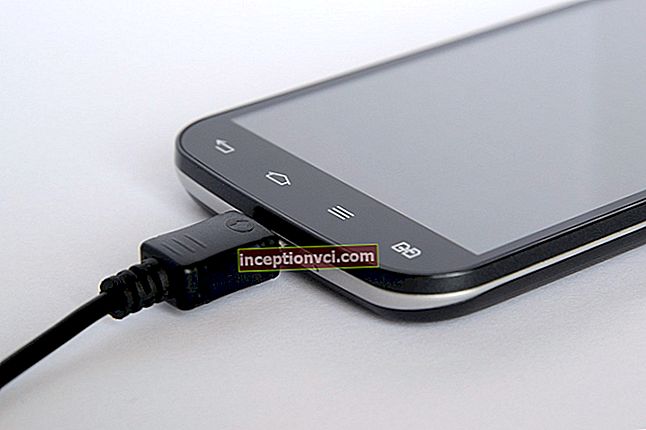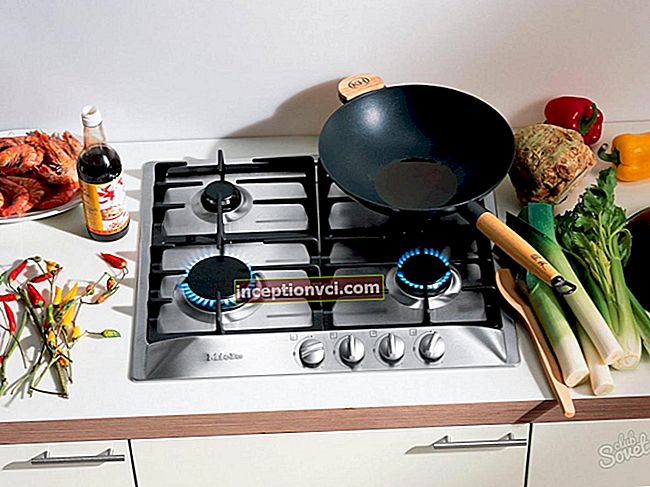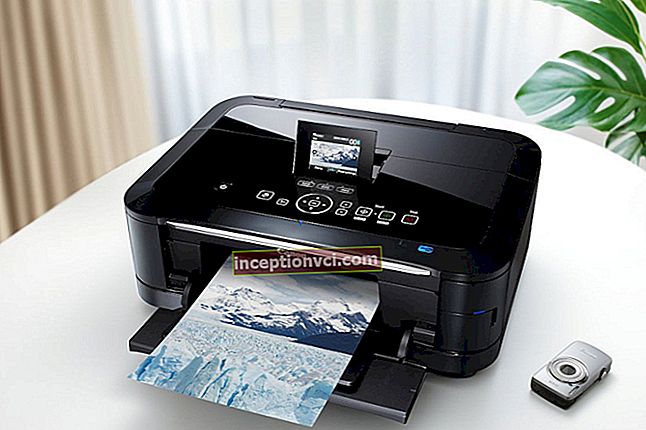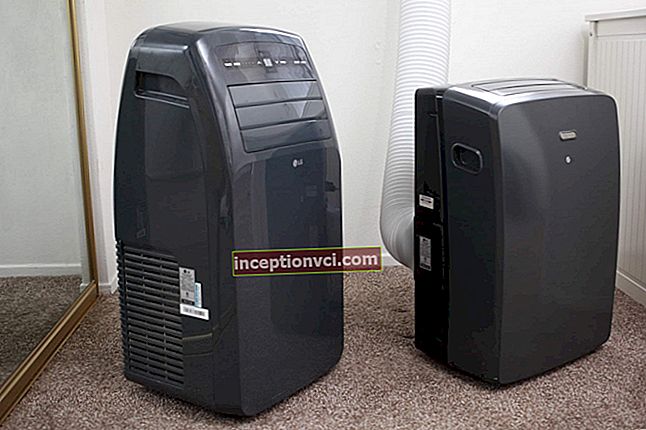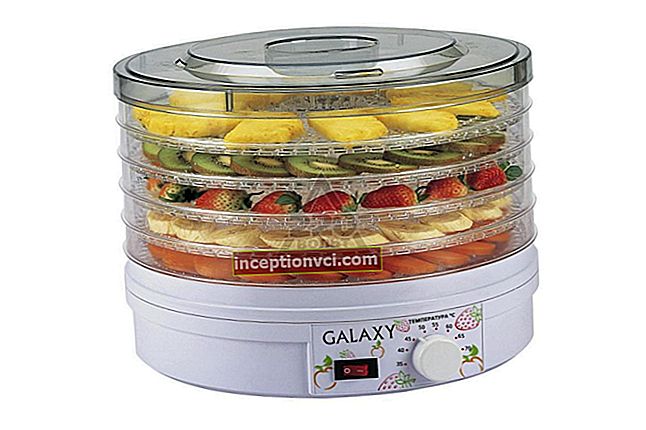Smartphones are mobile phones with a large screen and no keyboards. This difference is external. Gadgetsdiffer from their older counterparts in a wider set of functions and management principles. In recent years, they are replacing "push-button" phones from everyday life and manufacturers are saturating the market with such devices.
How to understand this variety and choose a smartphone? Let's figure it out step by step.
Step 1: decide why you need a smartphone?
A list of the main functions of the phone is given below:
- working with the Internet: using e-mail, browsing sites, communicating on the network (quick communication programs, social networks);
- voice communication;
- photo and video filming;
- viewing photos and films, listening to music;
- Reading books;
- games.
Some smartphones allow you to work with documents. This applies to models with large screens. But these features should be viewed as additional features. For such tasks, it is better to take a closer look at tablets or convertible laptops.

First of all, answer yourself the question, what are you going to do with your smartphone more often. Smartphones can be conditionally divided into the following types:
- "Smartphone = phone" - if you need a replacement for a broken phone, then it is better to choose an inexpensive smartphone. Screen up to 4.1 inches with a resolution of up to 800x480 and a TFT matrix, a 2-5MP camera, not a very powerful processor;
- "Multimedia platform"... Modern smartphones are equipped with powerful cameras with a resolution of 5 to 12MP, which work perfectly as cameras and camcorders. If you are going to often photograph and shoot videos, then this indicator is key. The cameras in these smartphones have autofocus, digital zoom, and other features that make life easier for photographers. Graphics processing requires serious computing resources. A powerful processor with four cores or more will come in handy. Videos and photos take up a lot of space. This is easier, since most models have slots for micro-SD memory cards. If you take such a device, then immediately buy a card for 16-32GB. A high quality screen matrix - IPS or AMOLED will not hurt;
- "Internet and all-all-all"... Social networks, Twitter, Instagram and other networking services have become part of everyday life. Smartphones allow you to stay online whenever and wherever there is coverage. If you are an active user of social networks, then it is better to choose a smartphone that has a Wi-Fi adapter and a 3G or 4G modem. It is important that the screen also matches - more than 5 inches. Best suited for such tasks are the so-called. phablets.
In 2016, sales of mobile gadgets totaled 3.916 billion units.
Step 2: how to choose a smartphone operating system
In a smartphone, not only the filling is important. The functionality of the device depends on the programs that are on it, what they do and how often they are updated. They are also referred to as the "software ecosystem". In turn, the ecosystem is determined by the operating system on which the programs run. The main operating systems are described below.
IOS operating system
IOS phones are exclusively manufactured by Apple.

iPhone 6s 64GB Space Gray Original: Factory Refurbished
Benefits:
- a large number of applications - 2.2 million at the beginning of 2017. Many of them are free;
- high speed and stability of work;
- OS is optimized for working with multimedia;
- up to a dozen Apple devices are linked to one account. This is convenient for syncing data to them.
Disadvantages:
- iTunes is required to sync data with your computer. All programs can be downloaded only through it;
- you can jailbreak the phone by jailbreaking the device, but this is unsafe, there is a small chance that the device will stop working;
- no external ports;
- the iPhone only has an audio-out and a connector for a power / sync cable;
- The internal memory of the iPhone cannot be expanded - there are no slots for expansion cards in the design.
The American company TalkTalk Mobile conducted a study to determine the psychological profile of smartphone owners. The research was carried out in the context of the main operating systems - iOS, Android and BlackBerry. The conclusions are as follows: owners of iPhones pay more attention to their image and spend a lot of money on it. They consider themselves more attractive than the owners of other smartphones, and also travel a lot and hang out on social networks.
Android operating system
Another popular operating system that competes on an equal footing with iOS. Its development was started by Android Inc. After the acquisition of this company by Google, the latter continued to develop the system. Now the development of the system is under the auspices of the Android Open Source Project (AOSP), and applications are created by hundreds of independent companies. Android phones are made by many well-known manufacturers.

Samsung Galaxy S8 + Duos: no bezels!
Benefits:
- 2.7 million apps in the Google Play store (as of early 2017);
- the ability to install applications from other resources, alternative to Google Play;
- convenient synchronization with Google services;
- integration of Google services into the operating system;
- ample opportunities to customize the interface.
disadvantages:
- the battery runs out quickly due to high energy consumption;
- Due to frequent OS updates, some applications cannot be used because there is an incompatibility problem.
Windows Phone operating system
Windows Phone is an operating system developed by Microsoft specifically for mobile devices. It is the successor to Windows Mobile, although not compatible with it. Phones on Windows Phone are less common than on the same Android, but there are well-known companies among the manufacturers that produce such phones. For example Nokia.
Benefits:
- energy efficiency - devices on this OS last longer than on competing Android and iOS;
- high speed of work;
- simple and intuitive interface.
Disadvantages:
- a small number of applications compared to iOS and Android;
- performs worse with multimedia than competitors.

Step 3: choose a smartphone with a good screen
The smartphone screen is characterized by the following parameters:
- diagonal length;
- matrix type;
- screen resolution;
- touch screen type.
The main parameter in this list is the screen diagonal length. This parameter is most often given in inches (1 inch - 2.54 cm). In the period from 2007 to 2012, the average diagonal increased to 4 ", and in 2014 it has already exceeded 5". There is a tendency for further growth. Previously, smartphones were divided into smartphones with a small diagonal (up to 4.99 inches) and phablets with a diagonal of 5 inches or more. Now this division is largely arbitrary. Different manufacturers position their devices in different ways.
The length of the diagonal is also important because it determines the dimensions of the device. And they affect usability. The six-inch phablet is convenient for browsing, but hardly fits in your pocket. Therefore, you should not immediately aim at the big screen. The dots above the "i" will be placed by going to the store. Try different smartphones by touch, hold them in your hands, think about where you will carry them - in your jacket pocket or in your bag.The type of matrix determines the quality of the picture. There are the following options here:
- TN TFT - the cheapest and most common type of matrix for smartphones. The picture quality varies in a wide range from "very bad" to "quite good". Color rendition is "lame", viewing angles are small. Such screens are used in budget models. If you are not picky about picture quality, then this screen will do.
- IPS... In these matrices, the disadvantages of TFT are eliminated. The picture quality is sharper, the color rendition is better, the picture is not distorted when viewed from an angle. IPS screens are used in top-end, flagship models, but they are also installed on entry-level models. In terms of price / quality ratio, this is the best option.
- AMOLED Is a relatively new technology that uses organic light-emitting diodes rather than liquid crystals. The matrices have high contrast, deep blacks and give a rich picture. Which is better than AMOLED or IPS, smartphone lovers are ready to argue to the point of hoarseness, but here we are talking more about personal preferences.
Thus, if you need to choose an inexpensive smartphone and you are not picky about image quality, TFT will do. If you plan to use the full potential of the gadget, then do not skimp on a good screen.
Scientists from Harvard Business School found a relationship between our behavior and the size of a mobile device, a person's posture and his behavior. Summarizing their findings, owners of large gadgets behave more confidently than owners of devices with small screens. The main reason is the pose. A small smartphone makes the body involuntarily hunch and contract. A gadget with a large display allows you to be in an open position, and this gives confidence.
The clarity of the picture depends not only on the type of matrix but also on the screen resolution. The most common are two options:
- 1280x800 - the so-called HD, the best option in terms of price / quality;
- 1920x1080 - Full HD for more demanding users.
If these numbers do not tell you much, then we note that screens with the same resolution are used on laptops and desktops. That is, this is more than enough for smartphones.
Last but not least on the list is the touch screen type. The following types are distinguished:
- resistive screen. Resistive panels are among the simplest and cheapest devices of this type. The disadvantages include high sensitivity to mechanical damage. Now such screens are used less and less.
- capacitive screen. Capacitive screens are reliable and durable. They are able to withstand hundreds of millions of clicks and are excellent at resisting dirt (but only those that do not conduct electricity). They are more transparent than resistive. The disadvantages include the risk of damage to the electrically conductive coating, as well as insensitivity to touching non-conductive objects. You won't be able to use such a smartphone with gloves. These types of screens are used in most modern smartphones.
Step 4: selecting a phone by parameters - battery
Large screens of smartphones result in higher power consumption than regular phones. In addition, smartphones are equipped with Wi-Fi modules, 3G-modems, Bluetooth. They also take a lot of energy. Therefore, the larger the battery capacity, the better. At the same time, a capacious battery is also the weight of the device, since the battery is the heaviest element of a smartphone. Therefore, the advice is simple: choose the "golden mean". The battery should be both capacious and not too heavy. Of course, the latter is difficult to understand from the capacity indicators, so it's better to hold the device in your hands. A capacity of 2,200 to 2,700 mAh will suffice.

Motorola Moto: thin, light and beautiful
The technology behind the batteries is simple. Almost all smartphones now use lithium-ion or lithium-polymer batteries.
If you plan to actively use your smartphone, then consider purchasing an additional battery. In most models, the batteries are removable, which allows you to quickly replace a "dead" battery.
Step 5: communications and ports
To connect to the network and other devices, smartphones provide the following:
Network access:
- The Wi-Fi adapter is designed to connect the device to a Wi-Fi hotspot. Now there are free Wi-Fi points in many public places, so you can connect to the Internet without using the services of a mobile operator or a 3G modem;
- 3G / 4G modem: access to Wi-Fi points is not available everywhere. For example, if you are on the go. For a permanent connection to the network, smartphones are equipped with 3G or 4G modems. If you plan to travel a lot, then a 3G modem is highly desirable.
Access to external devices is carried out both through wired and wireless communications.
Wireless access devices:
- The Bluetooth adapter provides wireless connection of mobile and stationary devices within 10 meters.It allows you to exchange data and connect to the Internet if any of the devices has a network connection. Most often, this channel is used to exchange data between different mobile devices.
- GPS receiver. Using a network of satellites, GPS determines the location of the device and allows you to find the best route to your destination.
- NFC adapter. It is in many ways similar to Bluetooth, the difference is that it works at a distance of several tens of centimeters. Convenient if you want to connect to a nearby device. NFC technology makes it possible to pay in transport or make purchases in a store, as well as a tablet as a pass.
External ports:
- audio output. Everything is clear here - a standard connector through which headphones are connected.
- HDMI output. Through this port, the smartphone is connected to a monitor or TV. This is not necessary so often, but still there are models equipped with such an outlet.
Step 6: selection of a smartphone by parameters - memory and processor
The performance of modern phone models exceeds the performance of computers a decade ago. They are equipped with powerful multi-core processors, large memory capacity and advanced graphics adapters. For most of the functions of a smartphone, this computing power is quite enough. Unless the budget models do not have too high power, but they are bought more often to replace old gadgets. If you are aiming at buying a serious device with wide functionality, then there are some key things to know.
The performance of a smartphone directly depends on three elements: processor, RAM and graphics core. The latter will determine the speed of the smartphone in games.
By itself, a high frequency is not an indicator of performance. Modern phones lower their clock speed depending on which applications are running. In addition, performance also depends on a host of other factors. It is not correct to compare different models only by the processor clock frequency. Only special performance tests give an accurate estimate.
People check their gadgets every 6-7 minutes, or 150 times a day. They spend time on various activities and communicating using their phones - about 70 minutes a day is spent browsing the websites and searching for information for more than two hours a day! It takes 168 minutes to watch the video. 43% of the time that users spend on applications, they play, 26% go to various social networks. Reading news takes 2% of the time, the same situation is observed with productivity. 10% of the time spent on telephones is spent on communication, health and fitness, lifestyle and more.
The same applies to the number of cores. The rule "the more, the better" does not work here. We can only say with confidence that single-core processors are now equipped with budget models. If performance is not a priority for you, then they are worth paying attention to. On the other hand, if you are not going to run demanding programs on your smartphone, then you need to think carefully about whether to buy a smartphone with an eight-core processor. Most applications for phones use two cores, so a “quad” is enough.

Caterpillar: with integrated thermal imager
If you are interested in the optimal ratio in terms of price and quality, then you should take a model with a dual-core processor and a clock frequency of 1 GHz or more.
Now about the memory of the smartphone. Distinguish between constant and internal. The first determines the speed of the device and ranges from 512 MB to 16 GB. The more, the better. Internal memory is used to store programs and data such as photos and videos. The internal memory can be expanded with SD cards. The latter applies to Android and Windows Phone devices - you can insert the card into a special slot inside the case. IPhones don't have internal slots.To connect additional memory, you need a special adapter.
Step 7: security
It is always worth remembering that a smartphone is a personal data store. It can be either in the gadget itself or provide access to "cloud" data. Contacts, correspondence, photographs, documents - we would hardly want all this information to fall into the wrong hands.
To restrict access and secure data, the following options are provided:
- fingerprint scanner - used to unlock the phone, as well as for authorization on some paid services;
- iris scanner - used for similar purposes.
When choosing smartphones with these technologies, remember that they have come to be used relatively recently and sometimes errors occur when working with them.
Step 8: additional features
Additional features of smartphones include the following:
- FM radio
- Wireless charging capabilities
- Video call support
- Dual SIM support
Step 9: image
Over the past fifteen years, mobile gadgets have ceased to be just a means of communication. Now it is also a sign of status, good taste and belonging to a social group. When choosing a model, you also need to pay attention to this. Especially if you buy a smartphone as a gift.
Read: "What to do if the phone does not pick up the network?"
Finally, a video review of one of the flagship phones


